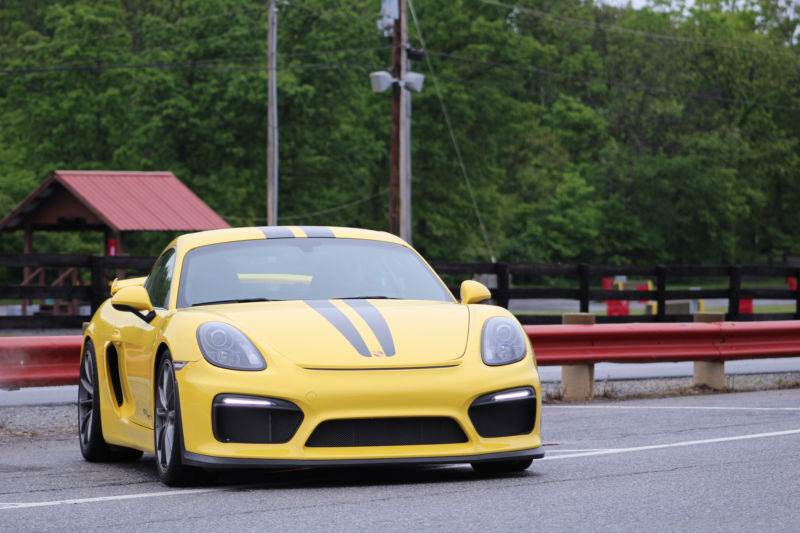
Enlarge / Porsche’s Cayman GT4 has been lauded as one of the company’s best-ever driver’s cars, but it’s actually even better with one of DSC Sport’s controllers on it. (credit: Jordan Edwards)
A constant source of fascination for me is the software-defined car. Back in ye olden days, reconfiguring your car to suit the racetrack and then back again for the grocery run meant spending time wielding tools and getting your hands dirty. Today, it’s all done with the push of a button. Our new cars are coming preconfigured from the factory with a range of different driving flavors from which to pick. Want a re-mapped throttle pedal? Done. A completely different shift strategy for the gearbox? Easy. But to my mind, the ability to recalibrate a car’s suspension on the fly makes the biggest change to its character.
You would think this would make me a fan of magnetorheological dampers. These are shock absorbers that use a damping fluid that changes viscosity—and therefore damping behavior—upon the application of a magnetic field. (The fluid is full of micron-scale magnetic particles that align when subjected to a magnetic field, stiffening the fluid as a result.) But when I think of the best-riding cars I’ve been lucky enough to drive, they all have one thing in common: conventional valved dampers.
More conventional dampers don’t have to be any less clever than their magnet-empowered relatives. McLaren’s 650S is a great example, with its “banned in F1” system that links the front and rear of the car through a complex arrangement of hydraulic plumbing. But maybe the most impressive ride I’ve encountered was behind the wheel of DSC Sport‘s Porsche Cayman GT4.

